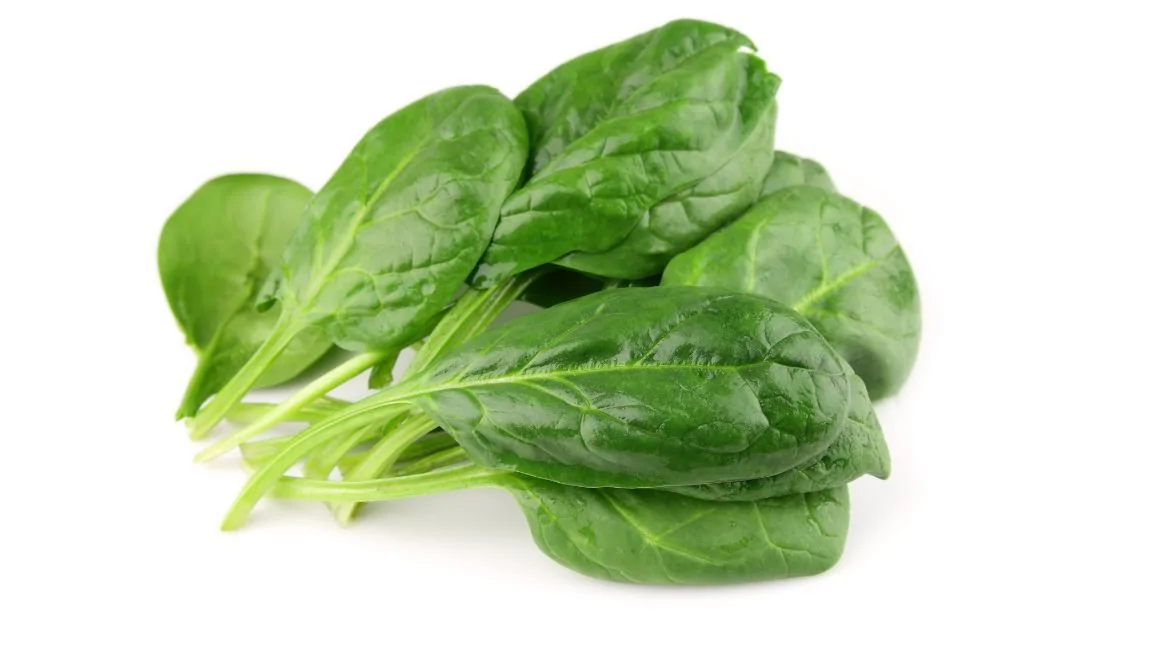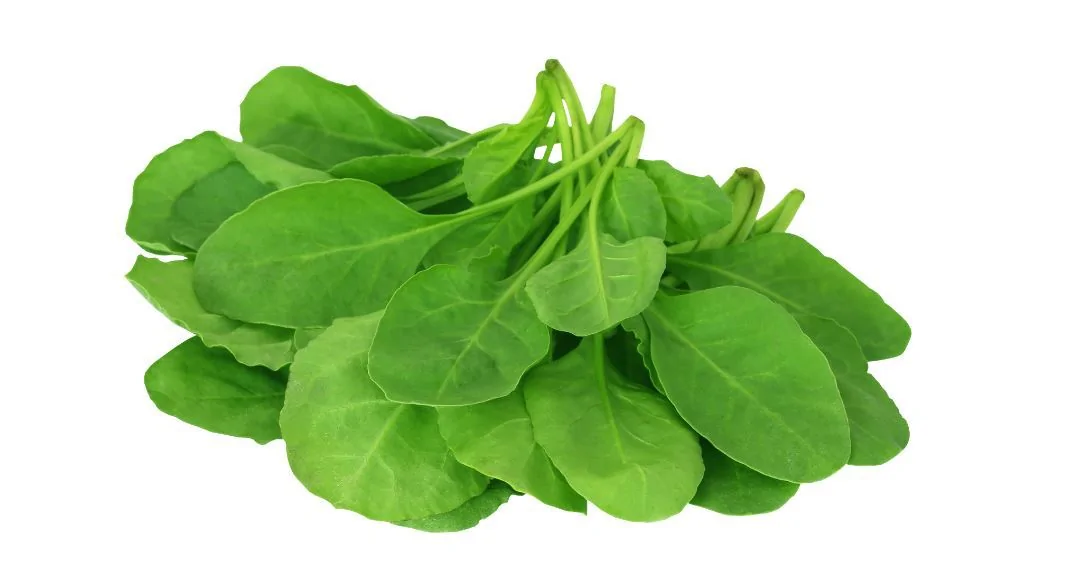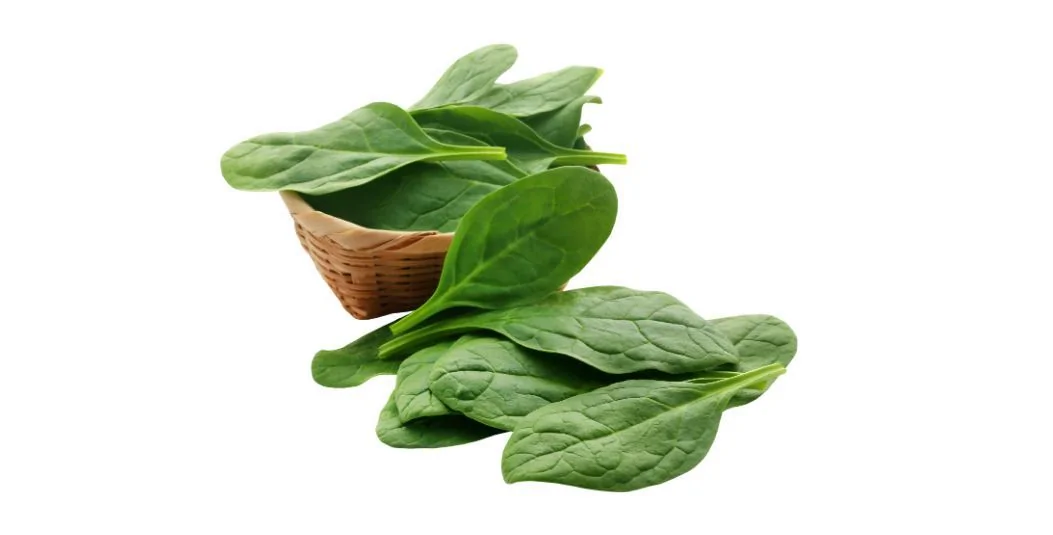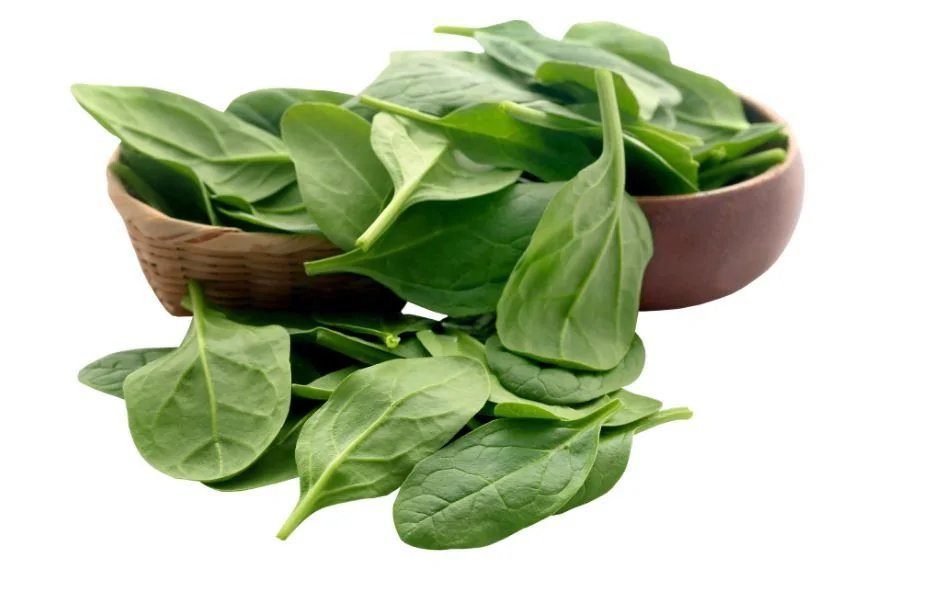
Spinach is considered a superfood when it comes to packing tons of nutrients, vitamins, and minerals in it. I’m sure you have some questions and I’ll cover most of them here.
Starting with
- Is too much spinach a bad thing?
- How much can a healthy adult consume daily?
Considering the nutritional information of 100g of spinach and understanding that the highest RDA value of any one of its nutrients only totals about 1/4 of the RDA of a healthy adult (potassium).
We can safely assume that even if you consume up to 400g of spinach, it would only equate to one specific maximum RDA value.
Spinach has so many benefits that it is easy to overlook the negatives (if there are any).
Let’s discuss spinach and its nutritional values in detail, seeing how much is a safe amount to consume daily.
Table of Contents
Spinach overview and nutritional facts
Spinach is considered one of the all-time great superfoods because it is rich in many vitamins and nutrients. It is highly rich in iron, magnesium, vitamin A (however, it is pre-vitamin A and needs to be converted).
It is also super-rich in vitamin K, which helps if you bruise easily and reduces blood clotting.
Among a ton more nutrients and vitamins, it is riddled with chlorophyll, vitamin C, folic acid, vitamins B2 and B6 (which is good for the heart), and it can improve macular degeneration (a disease that causes vision loss), this is because of vitamin A and all the phytonutrients in it.
Whichever way you want to look at spinach, it is always a healthy choice when added it any diet.
However, too much of a good thing is considered harmful for you in most regards.
So let’s take a look at what the nutritional facts are for spinach.
Are there any negative impacts it may have, and then consider the RDA of certain nutrients and see if there is such a thing as having too much spinach or rather how much spinach is safe to eat on a daily basis?
Raw spinach nutritional facts per 100g according to the USDA

| Energy | 23 kcal |
| Protein | 2.86 grams |
| Fat | 0 grams |
| Carbohydrate | 3.63 grams |
| Fiber | 2.2 grams |
| Sugars | 0.42 grams |
| Calcium | 33 milligrams |
| Iron | 2.71 milligrams |
| Potassium | 558 milligrams |
| Magnesium | 79 milligrams |
| Sodium | 79 milligrams |
| Vitamin C | 7.5 milligrams |
| Vitamin A | 2917 IU |
| Fatty Acids | 0.39 grams |
| Cholesterol | 0 milligrams |
What is the RDA of vitamins and nutrients
The RDA (recommended daily allowance) are the amounts (or levels) of essential vitamins and nutrients that have been established and judged by the Food and Nutrition Board.
These levels meet the adequate known nutrient needs of practically all healthy people.
It just means the average amount of vitamins or nutrients a healthy person on a day-to-day basis should consume in simpler terms.
The RDA was first published in 1943 and has been revised over the years to include and disclude various vitamins and nutrients.
Based on the RDA of standard nutrients that a healthy person should be consuming every day, we can check whether or not spinach falls in line with these subjective rules of the RDA.
How much potassium in spinach?

- 100 grams of raw spinach contains approximately 558milligrams of potassium.
- The RDA for potassium varies from men to women and by race; however, the RDA is around 2000 to 3000mg.
- This means that spinach is well below the RDA per 100g, and it would only reach the RDA limit at about 400 grams.
How much fiber does spinach have?
- Spinach has quite a high amount of fiber in it, with 2.2 grams per 100 grams.
- The RDA for an average adult should be between 25 to 30 grams, so as you can see, spinach is far from hitting the RDA.
How much iron does spinach have?

- The RDA for iron is roughly between 12mg and 18mg a day for men and women; we see can spinach has 2.71milligrams of iron per 100grams.
- Hence once again, it does fall below the RDA, but it does fulfill and give an abundance of this specific nutrient and other nutrients.
- It is good to note that an individual will also get other vitamins and nutrients throughout the day from various other meals contributing to their RDA.
How much protein does spinach have?
- Protein is a little more challenging to calculate because the RDA will depend on the individual’s weight, BMI, and calorie intake for any specific diet they are on.
- However, the RDA of protein is 0.8 grams of body weight for an average adult.
- Spinach has a fair amount of protein in it and, as such, is considered a viable protein source for many vegetarians obtaining protein from other sources, excluding meat.
How much magnesium does spinach have?

- Spinach is rich in magnesium, containing 79mg and the RDA of an average adult is approximately 420mg a day.
- This means that 100 grams of spinach fulfill almost 1/5 of a person’s RDA of magnesium.
How much calcium does spinach have?

- When considering that spinach only has about 0.3% (33mg) of the RDA of an average adult’s calcium intake, we can conclude that although it is rich in calcium, it should not be specifically used as a calcium-rich source of nutrients.
Any other nutrients and vitamins we should account for in the RDA and that of spinach?
As we briefly touched on, spinach is filled with other vitamins and nutrients, including Vitamins A, C, B2, and B6, as well as folic acid.
Without divulging every single RDA (we covered the primary RDA’s that always concern individuals) for each, spinach does contain a fair amount that adds and contributes to a healthy person’s RDA value.
With all this information that we have considered, it is safe to say that a person could easily consume up to 400grams of spinach a day if they had the appetite for it.
We can safely and informatively assume this based on its nutritional values and the RDA values of a healthy adult.
Negatives concerning spinach
The only thing that a person should be concerned about with spinach is that it is high in oxalates.
This means that if your body is prone to producing kidney stones, spinach could impact your body by creating more of them.
However, there are ways around this, and that is to steam your spinach and then throw lemon juice on it.
Where can we insert spinach into our diet?

If you want to add all the health benefits of spinach to your diet, you could literally put spinach in with any meal.
There are hundreds of recipes using spinach as a side dish, a main dish, and even for smoothies and drinks.
However, one thing to note is that although spinach is a healthy vegetable to add to your diet, you should always try and prepare it properly.
That is, you should follow recipes that steam and cook spinach in a way that it still has all its nutrients when it is prepared.
FAQs about spinach
Where can I find video recipes for spinach?
YouTube is always one of the best places to find video recipes, and spinach is no different. Check out these great recipes
Where can I find smoothie recipes for spinach?
Once again, YouTube is one of the best resources for video recipes, and following a video is easier than reading a recipe; check out these spinach smoothie video recipes
How much spinach in a smoothie?
This is a frequently asked question, and as we can see from our chart of spinach nutritional facts and the RDA of specific values, you would probably be best suited to use no more than 100g for anyone smoothie.
You would be best suited to use a 1/4 cup which equates to 32grams.
You have to consider if you are making one smoothie or a smoothie for the entire family, and then you also have to take taste into consideration. Some individuals like the taste of spinach and some do not.
Hence, best start off with 1/4 cup, which is about 32 grams per smoothie.
Remember, you will be getting your RDA of your vitamins and nutrients from other meals during the day.
Where can I find healthy spinach recipes?
Cookinglight is a great place to find light and healthy recipes and should always be one of the first places you look for recipes if you are a health fanatic.
Conclusion
Spinach is a vegetable that has almost everything you need in it when considering your daily intake of vitamins and nutrients.
It is jam-packed with potassium, iron, magnesium, fiber, and everything in between. If you are considering a healthy diet or even if you are on a nutritious diet, it should include some form of spinach.
According to the average RDA, we discovered that due to spinach containing a vast abundance of the nutrients, vitamins, and minerals we need as healthy adults, it actually has very few drawbacks.
That being, it is high in oxalates; however, this can be overcome by steaming your spinach and pouring lemon juice over it.
All in all, if you were considering adding spinach into your diet, you should start straight away because the pros definitely outway the cons, and there aren’t many cons.

Leave a comment